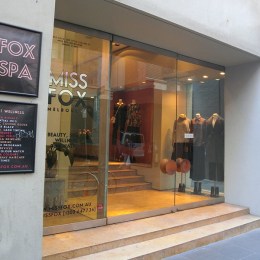Considering the ultra-competitive aesthetics marketplace, it’s not surprising business owners fear increasing their prices.
But Mick Dwyer CEO of Elite Hair Education, says if you’re looking to maximise profits, it’s an absolute must.
“Despite inflation and increases in the cost 0f supplies, many spa, salon and medi-clinic owners in Australia haven’t changed their pricing structure in over ten years,” he says.
“They feel that if their competitors haven’t budged, and they do they’ll lose customers.
“Most owners are so focused on doing what they love, they tend to forget how critical it is to think strategically. They often price their services a fraction under what their competitors are charging.
“Little consideration is given to how much they actually need to charge per treatment make to make money.”
Thankfully, he has some practical pricing tips designed to power-up profits. He shares with SPA+CLINIC:

Curate your ideal client
By tapping into the mindset of your ideal (most profitable) clientele and how they feel about your business, you can tailor your services accordingly.
“This means you can charge more, because you can tailor your services (including the little things you do to add value) exactly to their needs,” explains Mick.
“Segment your clients into groups, then work out the most profitable group. Once you establish this, then that’s your ideal client.
“You can ask them when they come in or survey them via email on why they visit and what you could do better.”

Rethink the small costs (that add perceived value)
The little things differentiate you from your competitors can make a big difference to your clients perception of what you do.
Although you may be offering a near identical service to your competitor, you can charge more for it if your clients perceive greater value in what you do.
“If you offer a premium drink on arrival it costs you about $2, while a pub or bar might charge $10,” explains Mick.
“Factor the expense of the drink into your overall treatment price somewhere between, rather than the amount it cost you – do the same for all the small services that add intrinsic value.”

The beauty of bundles
The secret to raising your prices without deterring loyal clients is to do so without them noticing.
“Bundle several treatments together as a package, concentrating on the most popular items on your menu,” suggests Mick.
“Make sure the bundles are the more economical option – the price should be more expensive for an individual treatment.
“Once clients start buying packages they become loyal as it’s hard for them to get the same service from somewhere else.
“When putting together, refer to your notes from when you surveyed your ideal client, then tailor it with them in mind.”

Timing is everything
“Increase your prices in tiny amounts, quarterly, rather than a large amount in one big hit,” advises Mick.
“Moving little bits at a time won’t be noticeable and won’t affect every client each time there’s a rise.
“Choosing the right times of the year for price changes is important too – February is the worst month for aesthetics businesses because there’s Christmas credit card bills to pay and school fees.
“At this time they’ll be most likely to notice which may encourage them to look for another option.”
“October is the best month for increases as people are more likely to be ‘flush’ – then if they come back one more time, their next booking will be right near the festive season and no-one will want to be changing then.”

Reasons to rebook
There are several pricing strategies to entice clients to rebook after their treatment.
“If they’re rebooking, offer them a complimentary service or a discount” says Mick. “Also, really give them a reason to want to keep their appointment.
“You could offer a generous discount on a retail purchase, but only when they come back for the appointment.
“When it’s quiet, why not run an “off-peak” special and offer that special price to people rebooking – it demonstrates that they’re getting something really special.”
- Sydney-based Mick Dwyer owned salons for 20 years and now spends his time educating, writing books and even schooling accountants on pricing strategies for aesthetics businesses.




